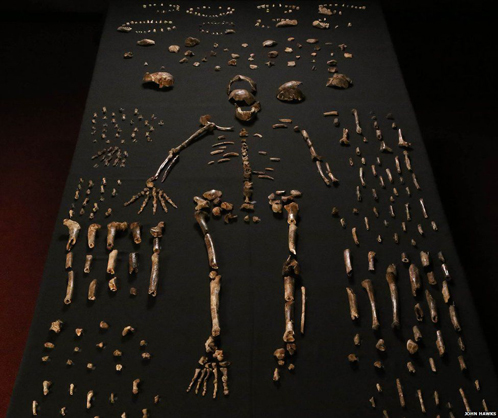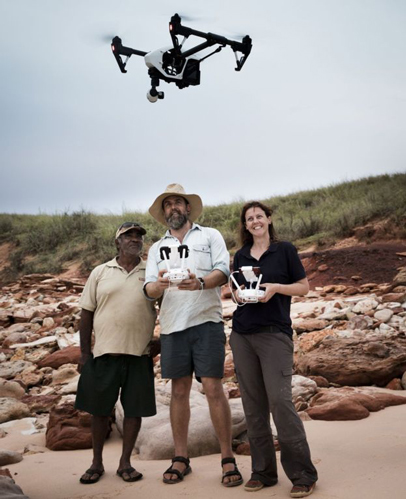New Species of Ancient Human Described
Homo naledi – New species of Hominin
A team of international scientists including researchers from the University of Witwatersrand (Evolutionary Studies Institute), South Africa have announced the discovery of a new species of human – Homo naledi. The fossils, some 1,550 of them, have been collected from a cavern deep in a limestone cave system in the Cradle of Humankind UNESCO World Heritage site. These fossils, the largest collection of hominin fossils found at a single location in the whole of Africa, will provide palaeoanthropologists with unprecedented levels of data.
Laying Out the Collection of Homo naledi Fossils
Picture credit: John Hawks/University of Wisconsin-Madison/University of Witwatersrand
Redefining What it Means to be Human
The bones were collected over a period of three weeks, following their initial discovery in 2013. What puzzles the scientists is how did the bones get to be in the deep cave? Bones and other debris can be washed in over time due to flooding, in this instance there is no evidence to suggest deposition of fossil material as a result of water transport. Occasionally, such caverns are used as dens by carnivores, the bones of victims are preserved as evidence but there are no bite marks or evidence of scavenging on the bones.
Homo naledi
One theory is that these bones represent the dead bodies of individuals who were carried into the cave and deliberately placed there. This suggests that Homo naledi was capable of abstract thought and, potentially, showing reference for the dead.
Co-author of the scientific paper published in “Elife”, Professor Lee Berger (University of Witwatersrand) stated:
“We are going to have to contemplate some very deep things about what it is to be human. Have we been wrong all along about this kind of behaviour that we thought was unique to modern humans?”
To read a more in-depth article on Homo naledi: New Human Species from South Africa.
Dating the Fossils
Calculating the age of the fossils is proving difficult, but these bones could be up to three million years old. Homo naledi had a brain about the size of a gorilla’s but a much smaller body, standing a little over a metre tall when fully grown. Where it sits on the human evolution tree, very much depends on obtaining an accurate date for the fossil material.
Safari Ltd have produced a set entitled the “evolution of mankind” – a series of models that depict hominin evolution. To see the Safari Ltd model range: Wild Safari Prehistoric World.




